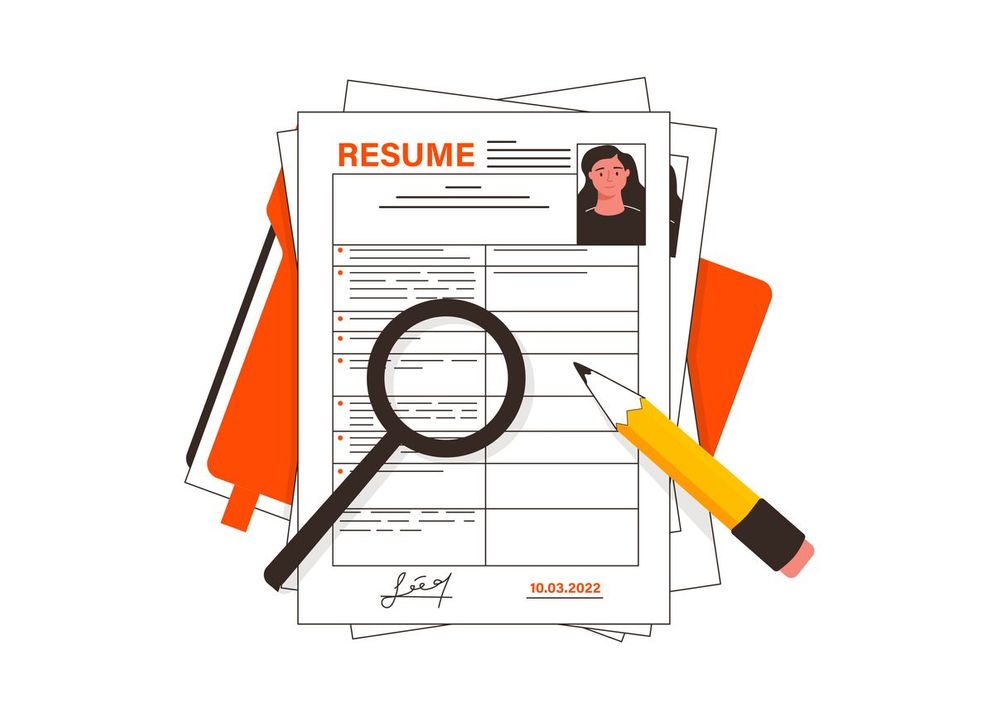
Your resume is everything in the hiring process. And as much as you might like to think that your resume is perfect, it probably has a few flaws. Before you start applying for jobs, take a closer look at your resume and see if it has any of these common pitfalls.
Before you do anything else, look at your resume on the computer and on paper. The content itself doesn’t matter if the layout isn’t pleasing. If a document is ugly, the reader will judge it and think less of you regardless of the content. One of the most common problems with resumes is that they look ugly and squished. Fortunately, good spacing can remedy this.
Choose a modern font, such as Calibri. Although you might have a close relationship with Arial and Times New Roman, these fonts could be hurting the appearance of your resume. The size also needs to be appropriate; it should be large enough to read but not so large that it looks like a first-grader wrote it. If you’re using Calibri as your font, you should pick size 10.5. And resist the temptation to use color, underlining, or italics.
The content itself should be logical. If you jump around from section to section, the document won’t read well. As you review your resume, ask yourself if it makes sense. The headings should have a hierarchy that follows through the document. If you have H3 headings followed by H2s, the document will look confusing and muddled.
Yes, your whole resume should sell you as an employee. But the first page is the most important page of the document, and it’s the page that should sell you. When an employer has a high volume of applicants for a job, they often skip over the second and third pages of resumes. You need to demand attention from page one.
If your resume is missing this quality, here are a few things you can do:
Make a list of traits the perfect job candidate would have
Think about which traits you possess, and write them down
Tailor the first page of your resume to focus on those specific traits
As you read over your first page, try to think from an employer’s perspective
It’s also worth mentioning that your responsibilities section shouldn’t be the star of the page. Although your responsibilities matter, they should only take up a portion of the first page. This is because responsibilities don’t actually show how well you performed. To better state your case, you should make sure that almost 50% of your first page is about achievement statements. Quantify your accomplishments and make it easy for a hiring manager to see your worth.
One of the most difficult parts of writing a resume is coming up with an achievement statement. If you’re not already familiar with the term, an achievement statement is a short phrase that describes the value to an organization. It should be both clear and specific. If you don’t have achievement statements or they’re not persuasive enough, you won’t stand out to a hiring manager.
Once again, this is an easy fix. Sit down and think about what your achievement statements should be. The statement should always be in the past tense, regardless of whether you still have the job. Start off each achievement with a verb, like “created,” “delivered,” or “designed.” Then, make sure each statement is relatively short. Ideally, an achievement statement should be one or two lines long.
If you’re still struggling, use the following formula to create your achievement statements:
Figure out what you did and what the result was
Using numbers, measure the results
Correlate the length of the statement to the work culture
If you send out the same resume to every employer, you’re doing something wrong. You should tailor your resume to certain job titles and employers. While you don’t want to lie on your resume, you do want to highlight the things that an employer wants to see. You should have at least three or four different resumes. Before you apply for a job, you should stop and think about which resume would get you the results you want.
This isn’t to say that you should spend an hour changing out your resume for every job. If you’re like most job seekers, you have a few specific job titles you’re looking for. You may also have a few different employer types you would be willing to work for. When you’re ready to apply for a job, think about the job listing. Does your resume highlight the traits that matter to the employer? Does your tone fit in with the company’s culture?
The same is true of your cover letter. If you’re not spending any time customizing your cover letter, you’re missing opportunities. Be specific, and show the hiring manager that you took the time to create the cover letter and resume.
Perhaps the worst mistake you can make is to have an outdated resume. Is all the information recent? If you haven’t updated your resume in a few months, it’s not updated. Spend an hour changing out your contact information and updating your job responsibilities.
You should also look at the overall document. If you wrote your resume ten years ago, it’s probably outdated. Things that were common and accepted in resumes years ago are no longer applicable today. Before you send out your resume, look at some examples of current resumes. Take note of the length, the font, and the overall appearance.
If you truly feel lost, you should consider hiring someone to work on your resume. At the very least, you can look online for other tips and tricks for resume writing. For an employer to believe that you’re relevant, you need a modern resume. Don’t let an old layout or font keep you from getting a job offer.
Lorem Ipsum is simply dummy text of the printing and typesetting industry. Lorem Ipsum has been.
